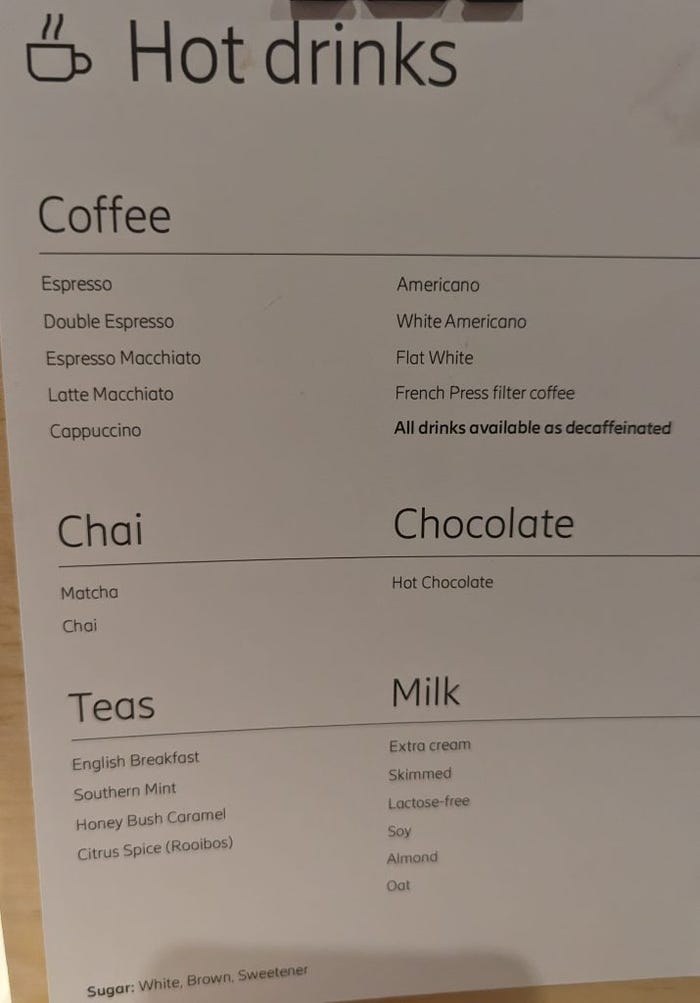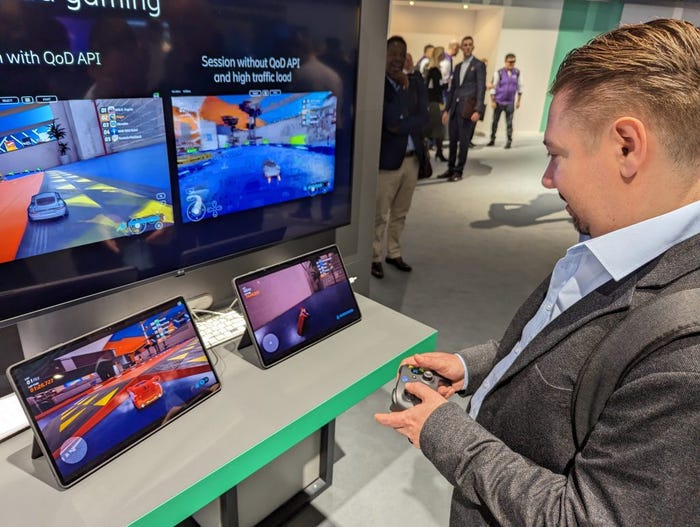MWC 2023 day 1 – telecoms is nearly as complicated as ordering a coffeeMWC 2023 day 1 – telecoms is nearly as complicated as ordering a coffee
Choice and complexity are the hallmarks of the telecoms industry these days, making the job of explaining it harder than ever for all concerned.
February 27, 2023

Choice and complexity are the hallmarks of the telecoms industry these days, making the job of explaining it harder than ever for all concerned.
Some of us are old enough to remember when buying a coffee was a brief, mundane affair, with the only variable being the presence or absence of milk. Now you have to choose between a seemingly infinite variety of beans, milks, froths, syrups, and sprinkles. From what we’ve seen of Mobile World Congress 2023 his well-documented agony of choice in the coffee world has now made its way into telecoms.
As you might be able to tell from the pattern of the sprinkles, the above photo was taken on the Ericsson stand. We already had an appointment for an interview and booth tour, on which more shortly, but it also offers a refuge from the downgraded ‘media village’ offered by the show organisers. Apparently the old media centre has been set aside for VIPs, leaving us lowly hacks with a few small rooms at the end of hall three – mockingly adjacent to the VIP entrance.
We’re happy to confirm that, as well as providing this story with its somewhat strained metaphor, the Ericsson coffee was of a decent standard. But, as if to prove our point, even here there was a lot to think about before ordering one.

As we reported from the Nokia event yesterday, the whole telecoms industry is struggling to explain itself. We still don’t really know what the point of 5G is and, chatting to Telecoms.com, Ericsson’s Head of Technology & Strategy at Business Area Networks Freddie Södergren was typically honest about the current state of play. A big part of 5G so far is simply “doing things that could have been done with 4G much more efficiently.”
Watch this space for a full write-up of that interview, but Södergren agreed that this isn’t the easiest time for anyone concerned with trying to explain the telecoms industry. The main problem is that 5G is a montage of smaller, niche applications, none of which easily present themselves as the ‘killer app’ that would make our job so much easier.
Ericsson’s big bet, of course, is that by opening up the network it will be down to the developer community to uncover that elusive flagship use-case. That’s the main reason it bought Vonage, as discussed at the recent Ericsson MWC pre-brief. So one of the things it has focussed on at its stand this year is some early illustrations of how this vision will manifest itself.
This ‘network exposure’, as it’s referred to, seems to be catching on. Nokia made frequent reference to it yesterday but Ericsson/Vonage features much more prominently in the GSMA-driven initiative announced this morning at the show, which also has buy-in from Orange, Telefonica, and Vodafone.
“We are excited to be part of this collaboration and demo integrated in the live network, which links the mobile network world with the global developer community,” said Ericsson CTO Erik Ekudden in the accompanying press release. “This is a paradigm shift that will put network functionality at the center of an enterprise digital transformation.
“This will allow mobile operators to monetize 5G by exposing advanced network capabilities via easy-to-use APIs. With 5G, we have an innovation platform, unlike anything we’ve seen before, which together with the Vonage Communications Platform will create a global network platform capable of supporting operators in their growth ambitions.”
On the stand, Ericsson sought to demonstrate how this works in practice through two instances of the same driving game. One used a regular 5G connection and the other a connection that had been fine-tuned for higher bandwidth and lower latency. As ever with the controlled environment of a trade-show stand, we had no choice but to take Ericsson’s word for it, but there was a clear difference in user experience, as modelled by Telecoms.com Deputy Editor Andrew Wooden below.

The problem is that it’s still not obvious who is going to pay for a premium wireless gaming experience or even how. The idea seems to be that it would be the gaming provider, in this case cloud gaming specialist Blacknut, that would buy the service from the CSP and then pass on that cost in the form of higher-tier subscriptions.
“Cloud gaming is the perfect showcase to demonstrate the potential of Open Network APIs,” said Olivier Avaro CEO of Blacknut. “Standardised across operators, simple to use and predictable cost wise, they empower application developers to take control of the network QoS.
“With 600+ premium titles playable from the cloud, Blacknut does not only require a solid cloud streaming stack, we also need an efficient network with the right bandwidth, latency and jitter parameters. Open Network APIs give us the opportunity to control the end-to-end user experience and deliver a consistent, stable, and superior gaming experience, even on the go.”
Still not a ‘killer’ use-case but a proof-point nonetheless. And therein lies the challenge and the premise for our metaphor. The 5G proposition consists of a seemingly infinite array of niche technologies and use-cases, which the likes of Ericsson are hoping will appeal to someone. The whole industry feels like it has reached a precariously speculative phase, in which there are no guarantees that any of its bets are going to pay off.
Just as there is presumably demand for the kind of bewildering choice we’re now faced with when ordering a coffee, various potential customers have presumably expressed demand for all of myriad options that comprise 5G. But the complete lack of certainty which, if any, of them will translate into healthy profits must be weighing heavily on the minds of all in attendance this week.
Get the latest news straight to your inbox. Register for the Telecoms.com newsletter here.
About the Author
You May Also Like









.png?width=300&auto=webp&quality=80&disable=upscale)


_1.jpg?width=300&auto=webp&quality=80&disable=upscale)